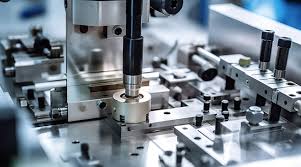Industrial connectivity is the backbone of modern manufacturing and automation. As the world progresses toward Industry 4.0, the demand for robust, high-performance, and reliable connectivity solutions continues to grow. At the heart of this evolution are components like connectors and cables, which facilitate seamless communication between devices and systems. Among these, the M12 connector stands out as a pivotal technology driving future trends in industrial connectivity. This article explores the emerging trends and the transformative role of M12 connectors and cables in shaping the industrial landscape.
The Shift Towards Industry 4.0 and Industrial IoT
Industry 4.0 represents the integration of digital technologies into manufacturing and industrial processes, emphasising automation, real-time data, and interconnected systems. The Industrial Internet of Things (IIoT) further enhances this vision by connecting physical devices through networks, enabling them to communicate and share data. In this environment, connectivity is paramount, and the demand for reliable solutions is greater than ever.
M12 connectors play a crucial role in this transformation by offering compact, robust, and high-speed connectivity. Designed to withstand harsh industrial environments, these connectors ensure that data and power transmission remain uninterrupted, even under extreme conditions. From assembly lines to robotic systems, M12 connectors provide the reliability needed to support the interconnected systems of Industry 4.0.
Enhancing Performance with M12 Cables
The rise of advanced manufacturing technologies demands equally advanced cabling solutions. M12 cables are engineered to meet these demands, offering superior performance in terms of signal integrity, durability, and flexibility. They ensure that high-speed data and power transmission occur without interference, a critical requirement in modern industrial applications.
These cables’ compatibility with M12 connectors further enhances their utility, making them indispensable in applications ranging from factory automation to industrial robotics. With the growing need for real-time data exchange and seamless communication between devices, M12 cables provide a dependable foundation for industrial connectivity.
Safety and Compliance: The M12 ATEX Connector Advantage
In hazardous environments such as oil refineries, chemical plants, and mining operations, safety is paramount. This is where the M12 ATEX connector comes into play. Certified for use in explosive atmospheres, these connectors meet stringent safety standards while maintaining the high performance expected from M12 technology.
ATEX certification ensures that the connectors can be safely used in environments with potentially explosive gases or dust. The combination of compact design, robust construction, and safety compliance makes M12 ATEX connectors a preferred choice for industries operating in hazardous conditions. As safety regulations continue to evolve, these connectors will likely see broader adoption, driving innovation in industrial connectivity.
Miniaturisation and Space Optimisation
As industrial systems become more complex and compact, the need for miniaturised components grows. M12 connectors and cables address this challenge by offering small-form-factor solutions that do not compromise performance. Their compact size makes them ideal for applications where space is limited, such as robotics, machine vision systems, and automated guided vehicles (AGVs). The ability of M12 connectors to handle high data rates and power requirements in a small footprint is a testament to their innovative design. This trend towards miniaturisation will continue to shape the future of industrial connectivity, with M12 technology leading the charge.
Scalability and Modular Design
Modern industrial systems require scalable solutions that can adapt to evolving needs. The modular design of M12 connectors and cables makes them highly versatile, allowing for easy integration into existing systems and seamless upgrades. This scalability is crucial in environments where rapid technological advancements demand flexible and future-proof connectivity solutions.
For instance, M12 connectors are available in various coding options, such as A, B, D, and X codes, each designed for specific applications. This flexibility allows manufacturers to select the most appropriate configuration for their needs, ensuring compatibility and performance.
The Role of M12 Technology in Emerging Applications
The versatility of M12 connectors and cables extends beyond traditional industrial environments. Emerging applications such as autonomous vehicles, smart cities, and renewable energy systems are increasingly relying on M12 technology to meet their connectivity requirements. The robust and reliable nature of these components makes them suitable for challenging environments, from outdoor installations to high-vibration scenarios.
In the renewable energy sector, for example, M12 connectors are used in wind turbines and solar power systems to ensure efficient energy transfer and system monitoring. Their ability to withstand harsh environmental conditions, including extreme temperatures and moisture, makes them an invaluable component in these applications.
Future Innovations in M12 Technology
As industrial connectivity continues to evolve, the M12 connector and its associated technologies are expected to see significant advancements. One area of development is the integration of smart features, such as built-in diagnostics and predictive maintenance capabilities. These innovations will enable real-time monitoring of connector and cable performance, reducing downtime and improving operational efficiency.
Another exciting trend is the development of hybrid connectors that combine data, power, and signal transmission in a single unit. This integration reduces the complexity of wiring systems and enhances overall system efficiency. M12 connectors are at the forefront of this innovation, paving the way for more streamlined and efficient industrial connectivity solutions.
Sustainability and Green Manufacturing
Sustainability is becoming a key consideration in industrial connectivity, with manufacturers seeking eco-friendly solutions that minimise environmental impact. M12 cables and connectors are increasingly being designed with recyclable materials and energy-efficient manufacturing processes. Additionally, their durability and long lifespan contribute to reduced waste and lower overall resource consumption.
The shift towards green manufacturing practices aligns with global efforts to combat climate change and promote sustainable development. M12 technology’s ability to combine performance with sustainability makes it an essential component in the transition to more environmentally friendly industrial systems.
Conclusion: A Connected Future
The future of industrial connectivity is bright, driven by the transformative impact of technologies like the M12 connector, M12 ATEX connector, and M12 cables. These components are not only meeting the demands of today’s advanced manufacturing and automation systems but are also setting the stage for future innovations.
As industries continue to embrace digitalisation, the need for reliable, robust, and versatile connectivity solutions will only grow. M12 technology, with its proven track record and ongoing advancements, is well-positioned to play a central role in this journey. Whether it’s enabling the seamless integration of Industry 4.0 systems or ensuring safety in hasardous environments, M12 connectors and cables are paving the way for a more connected and efficient industrial future.










